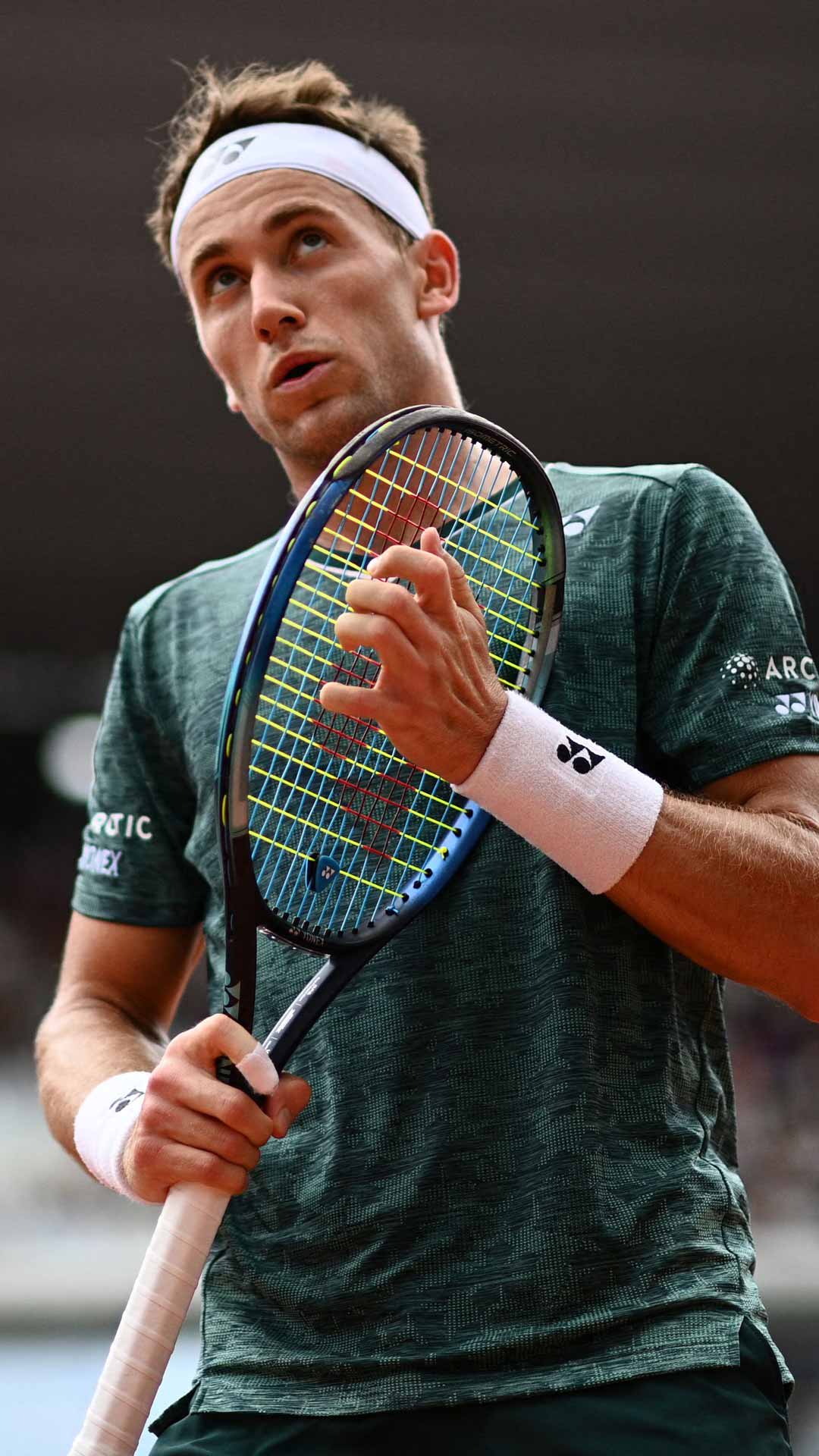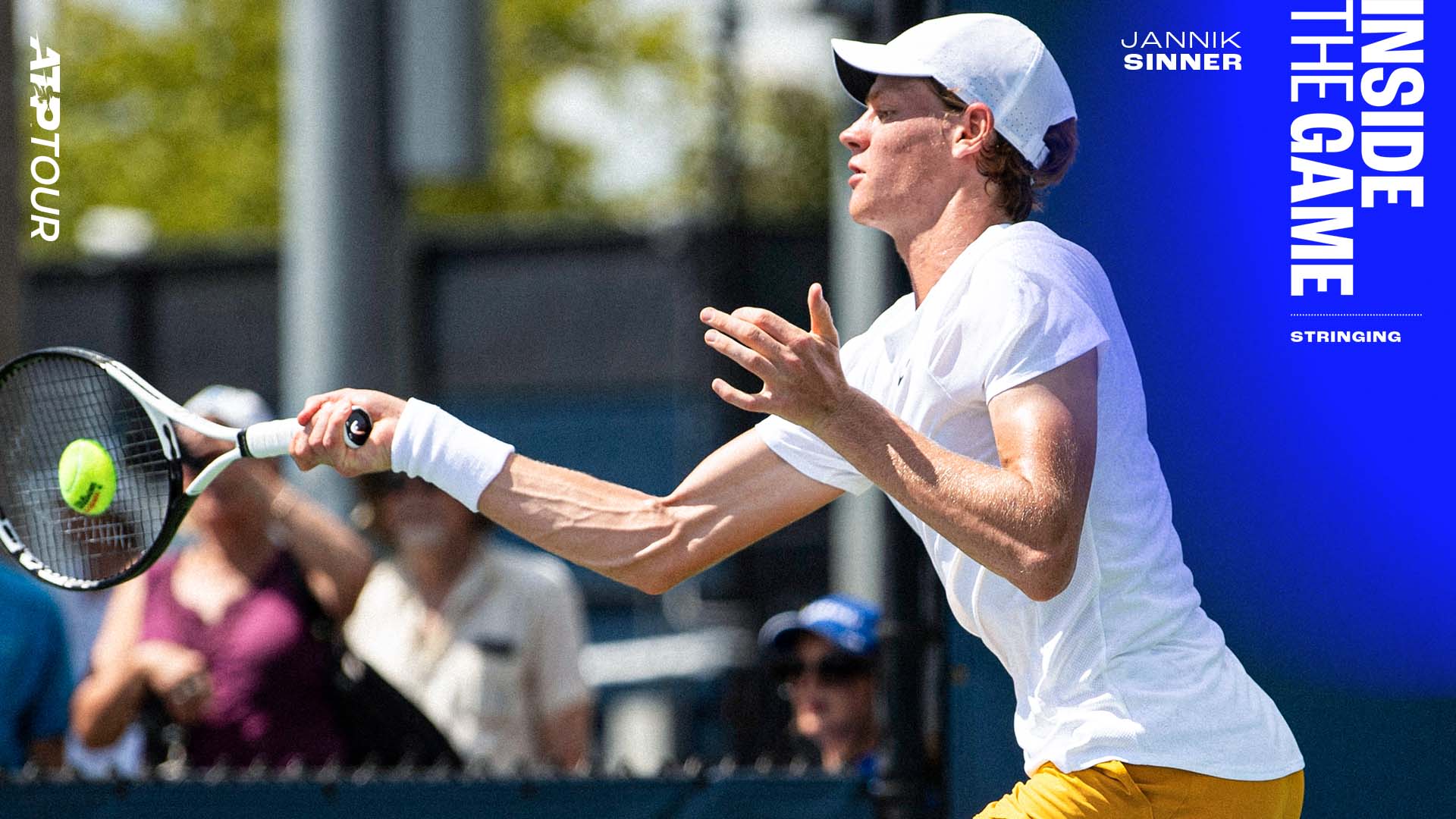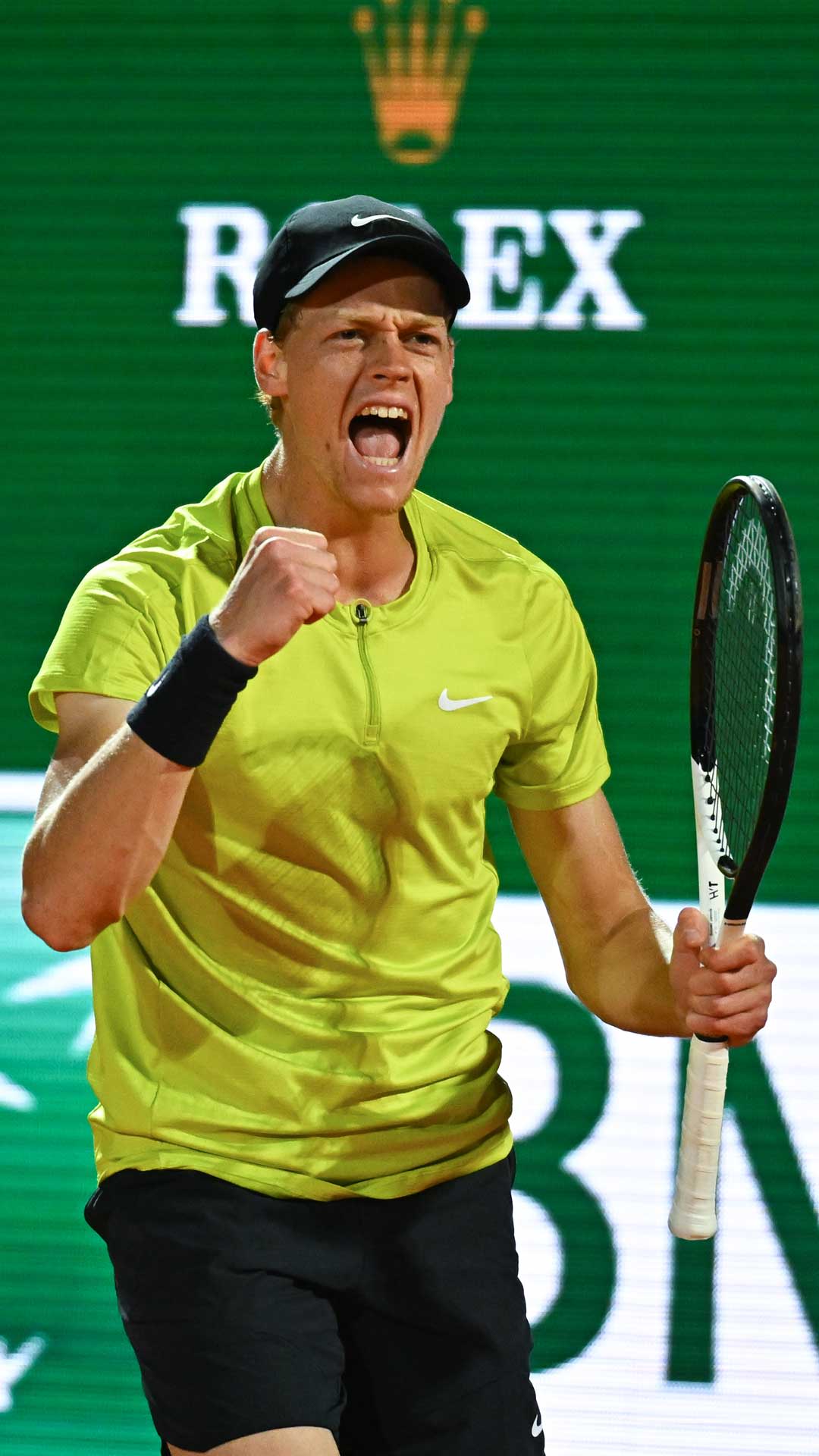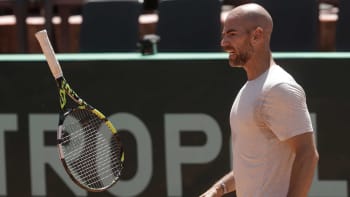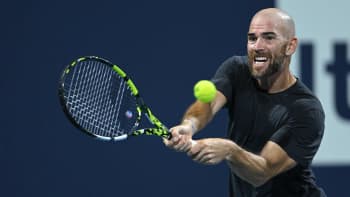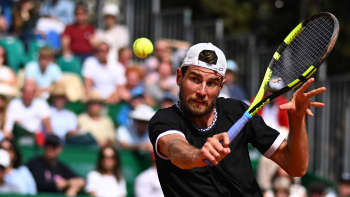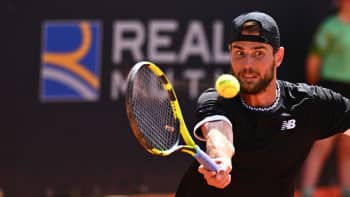High Strung
Stringing Stories From The ATP Tour
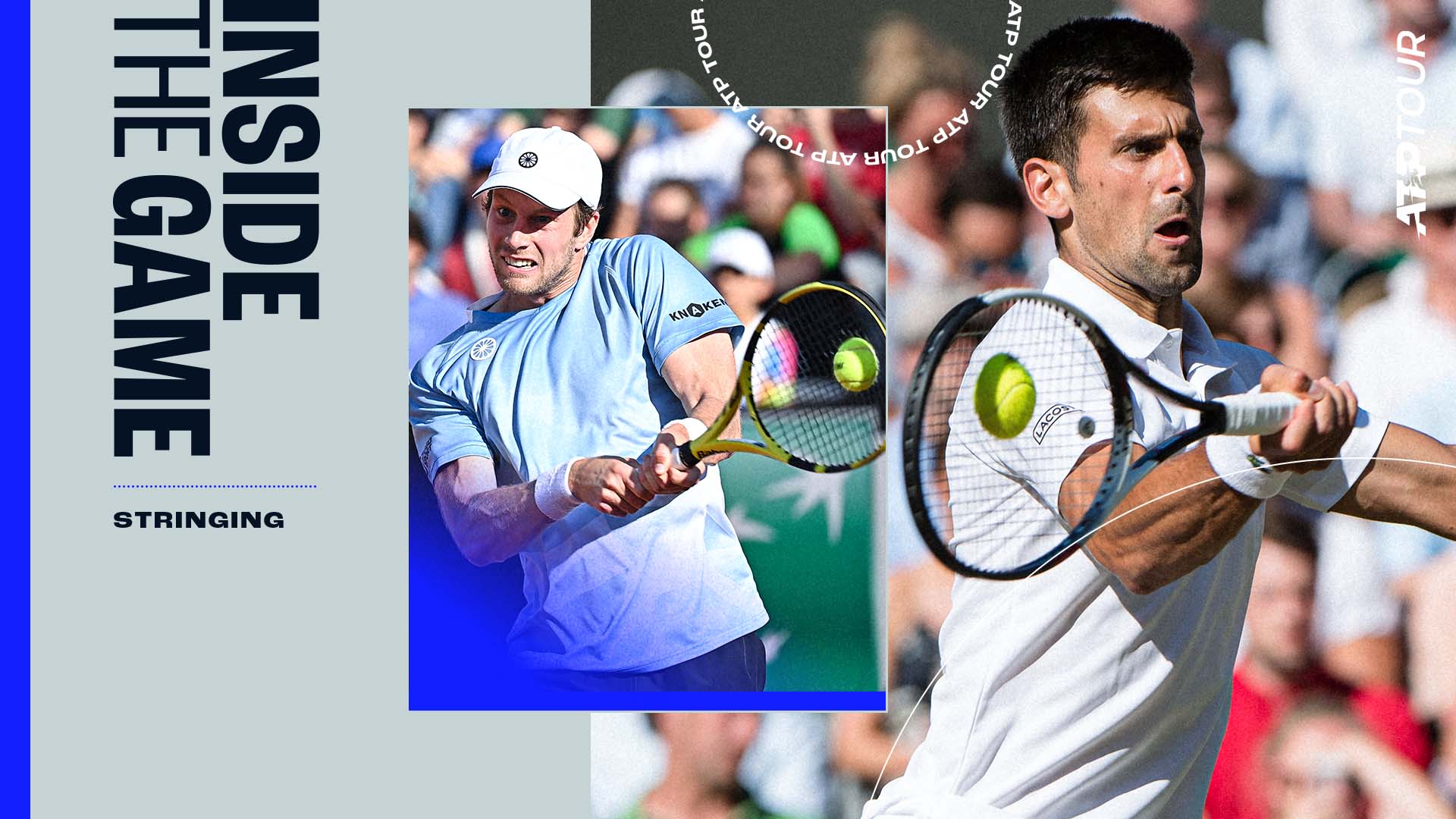
The String's The Thing
Racquets get a lot of the love when it comes to tennis gear, but the strings are the only piece of equipment that actually comes in contact with the ball on each swing. While strings may lack the flashy paint jobs and prominence of their more expensive counterparts, they can play an even greater role in a player’s success.
Tennis is an individual sport, but looking closer at players’ stringing preferences, it may be more accurate to say that tennis is a sport of individuals — such is the wide variety of habits and inclinations of the nine ATP Tour stars with whom we spoke.
Tension and string type are just two of the many ways players customise their playing experience on the court. Read on to hear about some of the more unique stringing preferences on the ATP Tour, with insights from Jannik Sinner, Alex de Minaur, Felix Auger-Aliassime, Adrian Mannarino, Casper Ruud, Denis Shapovalov, Grigor Dimitrov, Jiri Lehecka and Maxime Cressy — as well as two professional stringers.
Casper Ruud adjusts his strings. Photo by Christophe Archambault/AFP via Getty Images
Casper Ruud adjusts his strings. Photo by Christophe Archambault/AFP via Getty Images
Photo by Mike Lawrence/ATP Tour
Photo by Mike Lawrence/ATP Tour
Photo by Corinne Dubreuil/ATP Tour
Photo by Mike Lawrence/ATP Tour
Jannik Sinner
Stringing side-job...
When Jannik Sinner was first cutting his teeth on the ATP Challenger Tour, he also found himself spending a lot of time cutting broken strings out of his racquets.
The Italian used to string his own sticks in the early days of his career, and he quickly learned a valuable lesson on that front when he started playing Challengers in 2018.
“The first time I played a Challenger, I prepared five racquets in the evening,” he recalled. “I was practising so much that I broke all of them [the next morning]. So I went back to the hotel to string one for the afternoon. I came back, made the practice session, broke them again and the practice session was finished.”
A problem-solver from a young age, the rapidly developing Sinner made some quick changes to ease the burden on his side-job as a stringer.
“I was playing with very, very thin strings,” he said, “which after that tournament I changed them because if not I was breaking too much.”
Photo by Corinne Dubreuil/ATP Tour
Photo by Corinne Dubreuil/ATP Tour
Alex de Minaur
An important lesson learned...
Alex de Minaur is constantly tweaking his stringing setup each week on the ATP Tour, but he made a big change this season. The Aussie started using natural gut strings in his mains, switching over from poly.
(Mains are the vertical strings that stretch from the racquet’s throat to its tip, as opposed to the horizontal “crosses” that span from side to side.)
“I feel like I’ve got a little bit more power with the gut and a bit more feel,” said De Minaur, who won his seventh ATP Tour title this February in Acapulco with the new strings. “It’s given me that extra oomph that probably I was missing a little bit before. It’s overall helping me out.”
The Aussie has come a long way from his early junior days, when he would play with a racquet until the strings broke. But he had to learn the hard way about the importance of fresh strings.
“Junior days, I broke a string during match point in one of my matches and ended up losing that point because I broke the string, and losing the match,” explained De Minaur, who was about 15 or 16 at the time. “My coach gave me a lot of crap for that and from then on I always made sure I had a fresh racquet for the match. It’s been instilled in my head ever since.”
Now 24, De Minaur makes sure to always have one fresh racquet for each practice, two or three different setups for a three-set match, and three to four setups for a five-setter.
Because he is playing with gut, he switches to a fresh stick every second ball change. When he was using an all-poly setup, he would switch every ball change due to the quicker loss of tension.
Photo by Corinne Dubreuil/ATP Tour
Photo by Corinne Dubreuil/ATP Tour
Photo by Jared Wickerham/ATP Tour
Photo by Jared Wickerham/ATP Tour
Adrian Mannarino
How low can you go?
Much is made of Adrian Mannarino’s unique preference for an extremely low string tension. But the understated Frenchman does not see what all the fuss is about.
While most racquets have a recommended tension range roughly between 20 and 30 kilograms, Mannarino said his lowest-ever tension was eight kilos during a Davis Cup tie.
“Everybody was talking to me about that like it was something so crazy,” he recalled. “But actually this is just what I’m used to. For me it’s nothing particular. Many comments, but it’s actually not a big deal.”
In the past two years, he has never gone above 11 kilos, often leading to questions from incredulous stringers.
“I’ve always been using this kind of low tension, ever since I’m like 20 years old. I think that I went from 20 kilograms down almost every year,” he said, noting that his current range is around nine or 10 kilos, depending on the conditions.
“This is just the way I feel it,” he added. “It’s not that I want to have something different or any kind of stuff like that. It’s just this is how I feel good on court and I think this is what fits me well.
“This is just the only way for me to put the ball over the net, just giving enough pace on the ball. I’m not thinking about the tension, I’m just trying to make it easy for me to play well and that’s it.”
Another unique aspect of Mannarino’s stringing preferences is his habit of playing entire matches with the same racquet, neglecting the customary change to fresh strings at each ball change.
“Even if it's five sets, there’s always a racquet that I prefer more than the other,” he said, noting that he can be a bit superstitious in that regard. “I don’t switch unless I really feel like I have to.
“The way I’m holding the racquet is more important for me than the tension of the racquet. If I feel good with my handle, then tension is not going to be any issue for me so I’m just going to keep with the same one.”
Mannarino does start every match with fresh strings, and he brings four or five fresh racquets onto court just in case — even if he rarely uses them. Fortunately for the Frenchman, his playing style means he rarely breaks strings, enabling him to stick with the racquet that feels best.
“I’m not putting a lot of spin on the ball, so I usually can play with the same racquet for two or three weeks,” he said. “I might break a string during the offseason when I play with the same racquet for a long time. But during the match I never break a string.”
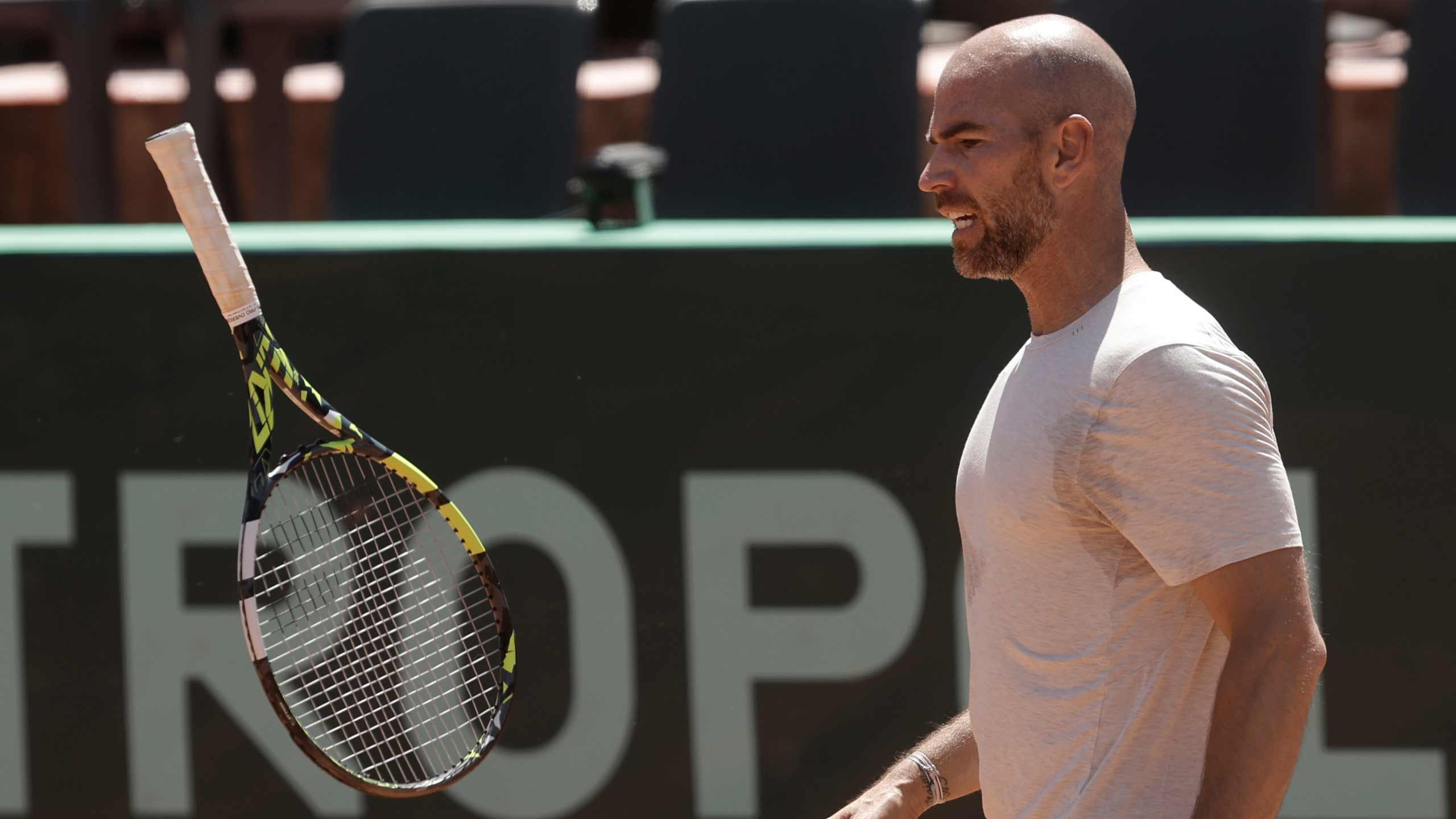
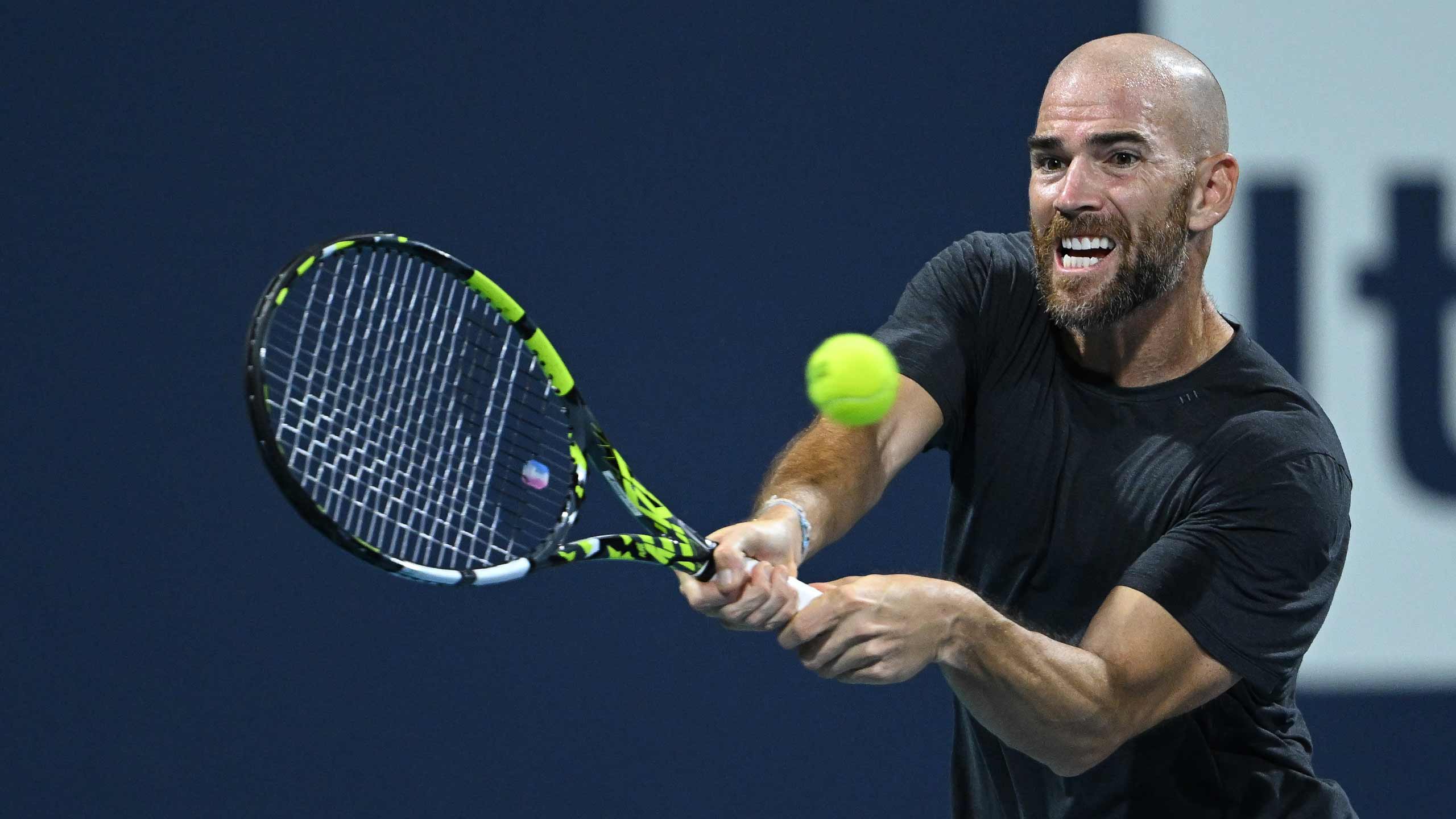
Photo by Mike Lawrence/ATP Tour
Photo by Mike Lawrence/ATP Tour
Photo by Corinne Dubreuil/ATP Tour
Photo by Mike Lawrence/ATP Tour
Felix Auger-Aliassime
Always adjusting...
Just as a player’s game must evolve for success at the professional level, so too must their preparations. Felix Auger-Aliassime explained how he would stick with one tension year-round as a junior — a habit that just doesn’t swing it as a pro.
“As a junior, I would play with the racquet until the strings broke. I wouldn't change at the ball change or anything like that,” he said. “That’s the transition of becoming a professional: Everything you do around your tennis becomes more precise and professional.”
Now, as he travels from city to city on the ATP Tour, Auger-Aliassime is always adjusting his setup. “Depending on the balls, depending on the venue, where I’m playing, I change the tension quite a bit,” he said.
The Canadian now takes a range of racquets to each match with a subtle but crucial difference of one or two kilograms between them. Over the course of a season, he has a range of about five to six kilos, depending on the conditions.
“Basically higher tension strings are more tight together, and lower they’re more loose, so you have more of a trampoline effect,” he explained. “So if it’s really fast or quick conditions, or really bouncy, sometimes you want the tension a little bit tighter.
“If it’s heavy or if it’s slower and you feel like the ball’s not going enough, then you want more trampoline effect and you want your strings looser.”
As far as string type, Auger-Aliassime currently uses a co-poly string, which brings him improved control compared to his previous choice of natural gut.
“I used to use natural gut, which is kind of the origin of the string. It’s not the most animal-friendly string, but that’s how they used to do it back in the day and still a lot of players use that,” he explained, alluding to the fact that such strings are made from cow gut — and originally, from sheep gut.
“For me it was more control,” he said of the advantage of co-poly. “I think I lost a bit of the feel compared to the natural gut, but I got more control with my shots, so that was a big reason why I changed.”
Photo courtesy of Ron Yu
Photo courtesy of Ron Yu
Stringers Have Their Say
Inside info on Federer, Nadal...
Craig Brotman and Ron Yu are longtime stringers who have travelled along with the ATP Tour preparing racquets for the stars. Both have their share of unique stories and insights.
Did you know that each player's racquets are strung by the same person throughout any given tournament week?
“What the public may not know is, when a player comes to a tournament, and the stringer strings that racquet, that stringer gets that player the whole week that the player is in the tournament, on the same machine," explained Brotman, who has been stringing on Tour for more than 30 years. "So we try to keep the consistency as close as possible.”
Brotman also shared that most players request the same tension across all their racquets when they send them in. While most players tweak their tensions depending on conditions, Rafael Nadal is an exception.
"Nadal is 55 pounds no matter what surface, no matter what conditions, no matter what time of day he plays," said Brotman.
Roger Federer, a master of precision, would typically go on court with two or three different tensions.
"When we would string for Roger, let's say at a Grand Slam, he will get there, let's say Tuesday before the tournament started," Yu recalled. "He would want maybe a couple of racquets every day up until this first match, and then he would want maybe nine or 10 racquets strung for his first match.
"He would get nine or 10 racquets every match day at a Grand Slam, best of five, but then on the off day in between, he would just use anything he had left over.
"But then you have certain players, like a Milos Raonic, he would also want usually eight or nine racquets for his match days, but he would still want two fresh racquets for his practice days in between. So it varies by player and what they're comfortable with."
Stringing habits also vary significantly between top players and those outside the Top 100, for example.
"Some of the top players have contracts where they pay a set fee to have as many racquets strung during a season as they want," Yu explained. "So they certainly are more likely to string more racquets.
"Somebody, let's say ranked No. 100 in the world, they may only string one or two racquets per match, and maybe not even string racquets on practice days."
Frances Tiafoe and Craig Brotman
Photo courtesy of Ron Yu
Photo by Clive Brunskill/Getty Images
Photo by Yong Teck Lim/Getty Images
Photo by Peter Staples/ATP Tour
Photo by Peter Staples/ATP Tour
Denis Shapovalov
Tension and time...
Timing can mean everything in tennis. Denis Shapovalov takes that to an extreme when it comes to stringing.
When dropping off his racquets ahead of a match, he’ll leave instructions not only for the desired tensions, but for the precise time he wants to have them strung.
“I think over the years, you just get more and more picky with your equipment. I don’t know if it’s more of a head thing, but I just prefer to have fresh strings for the practices and for the matches,” he explained, noting that he’s not the only player to make such specific requests. “I always feel like if they’re sitting for a little while then they tend to just die a little bit. Again, it’s just my personal preference.”
While Shapovalov is not quite as picky about his strings during practice, he typically brings five freshly strung racquets for matches, often sending them out to be re-strung in longer matches.
Fortunately for the Canadian, he has never run out of racquets during a competitive match — but he was the beneficiary of such misfortune for a string-popping junior rival.
“I played a junior match once where that happened to my opponent, and he was killing me actually,” Shapovalov recalled. “And then he tried to use a [friend's] racquet and couldn’t put the ball in the court. So he just retired, which was pretty awesome for me.”
Photo by Peter Staples/ATP Tour
Photo by Peter Staples/ATP Tour
Photo by Corinne Dubreuil/ATP Tour
Photo by Corinne Dubreuil/ATP Tour
Maxime Cressy
Two racquets, one tension...
For much of the past year, Maxime Cressy famously switched racquets in between each game, preferring to serve with one stick and return with another. But contrary to what most fans might think, the swap had nothing to do with string tension.
Instead, it was the racquet itself that the American was changing.
“I just realised that a lighter racquet was more suited for me on the returns,” Cressy said, explaining that he happened upon the discovery after breaking a string while playing in Tel Aviv.
While he recently began using that same lighter racquet on both serve and return, Cressy explained how he first fell into the racquet-swapping routine.
“I just started to use the previous [heavier] racquet to serve and then the next racquet for the return, and I really enjoyed the combo. And then in Tel Aviv, I just tried the combo out [during matches]. I was able to keep my efficiency on my serve, and have a better feeling on the returns and on the baseline. So I was like, this is a win-win for me. I thought if I can get used to the hassle of changing racquets between games, it could be a good match for me.”
But that’s not where Cressy’s unique preferences end. Even when he was constantly changing racquets, he only ever played with two — spurning backups and the traditional approach of using fresh strings for fresh balls. (Now he just strings two of the same racquets.)
“I just use the two same racquets, all year long, for practice and matches,” he said.
He recalled two occasions during which he broke his strings during a match, forcing him to adapt with an unfamiliar racquet: Once this season in Dubai during a doubles semi-final, and before that in his 2021 Indian Wells debut, at 5-5 in the third set against Laslo Djere. On both occasions, Cressy came through with the victory.
The American certainly knows what he likes. Since his college days at UCLA, he has continued to use the same strings at the same tension: Solinco Tour Bite, 54.
“I don’t change at all, never,” he said. “I just adapt to the conditions, rather than try to adapt with my string pattern.”
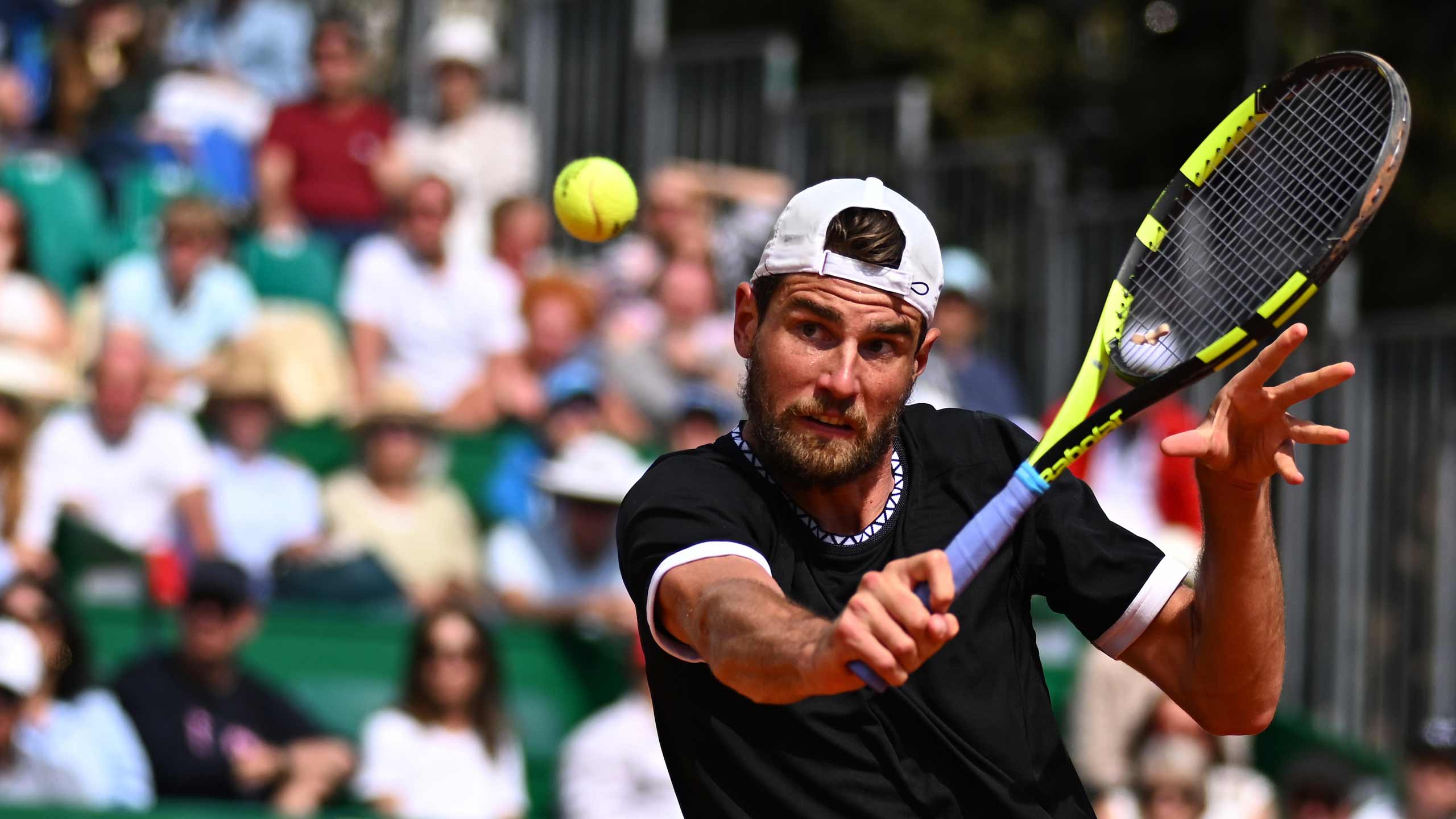
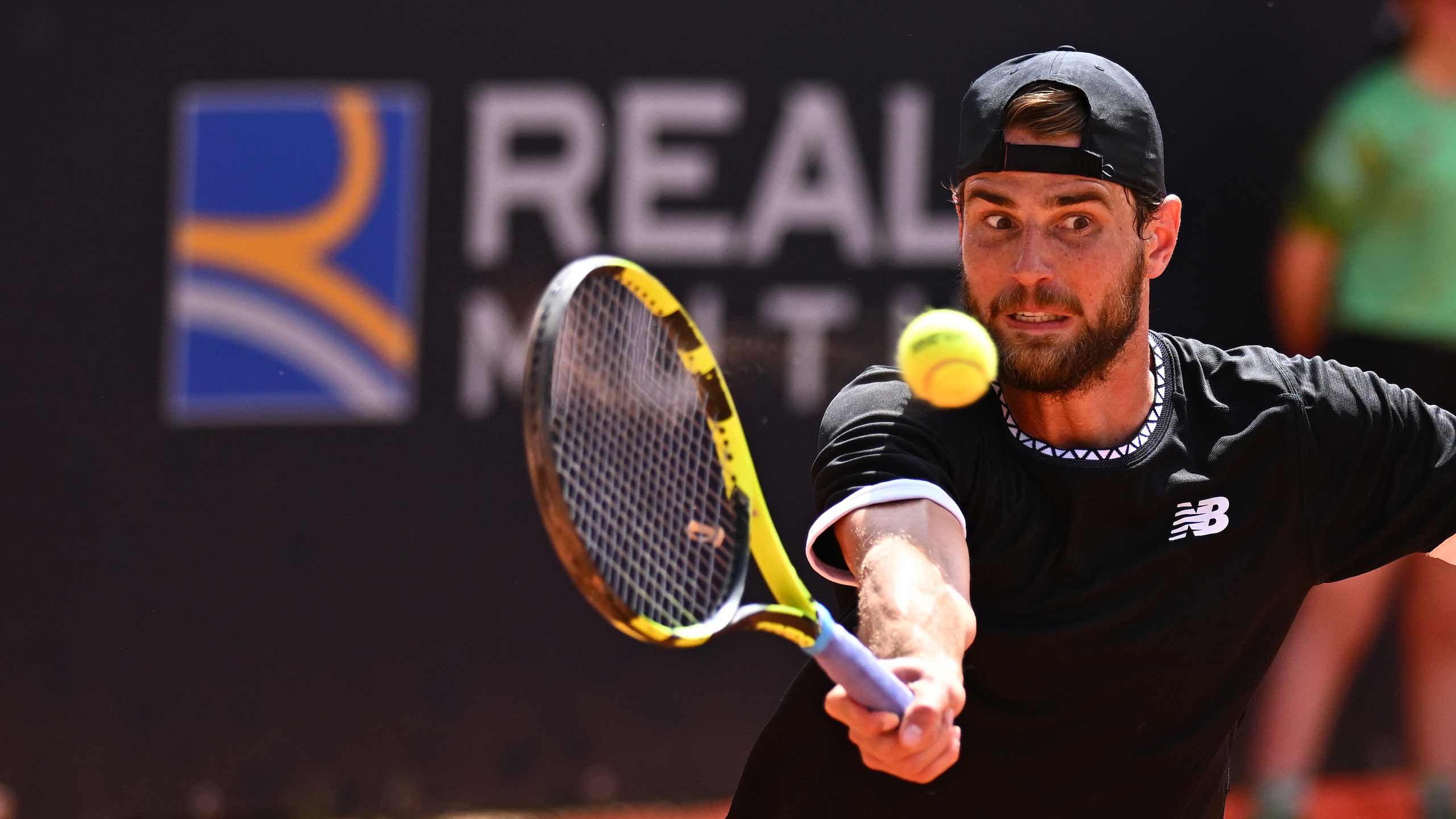
Photo by Peter Staples/ATP Tour
Photo by Peter Staples/ATP Tour
Casper Ruud
Shipping mishap in Brazil...
Keen observers might have noticed two different string colours on Casper Ruud’s frame. The Norwegian uses a unique, blue Yonex string on his mains — a thinner gauge with a hexagonal shape, with six edges to help create more spin.
“I’ve found the strings that I feel very comfortable with and that I like,” said Ruud, who has used the same setup for the last five years and has no plans of changing.
But back in 2019 at an ATP 250 in Sao Paulo, he was forced into a switch due to a mailing mishap. When a reel of the wrong strings arrived at his hotel, it was too late to correct the mistake.
“I received the wrong thickness once on my string, so instead of 1.25 [mm] I played with 1.20,” he explained. “Which doesn’t sound a lot, but it is a lot for a tennis player. You feel it right away and it’s much thinner.”
Due to the thinner strings, Ruud could only play for 20 to 25 minutes with each racquet, as opposed to the 40 to 45 minutes a string job normally lasts him.
“It just goes to show you how small the details are,” he said. “0.5 mm can be that much of a difference — you wouldn’t think, but that’s how it goes sometimes.”
But all hope was not lost. Even though he was stuck using the new strings for the entirety of the event, he still managed to have a successful week on the court.
“I played well, I made the semi-finals,” he said. “So it wasn’t too bad, it actually worked well. But I just had to change the string very often.”
Photo by Corinne Dubreuil/ATP Tour
Photo by Peter Staples/ATP Tour
Photo by Peter Staples/ATP Tour
Photo by Peter Staples/ATP Tour
Photo by Peter Staples/ATP Tour
Photo by Peter Staples/ATP Tour
Grigor Dimitrov
Blinding success...
Grigor Dimitrov has always been very attuned to his stringing setup throughout his career — so much so that he’s been known to request string tensions down to the tenth of a kilogram.
“It makes a huge difference,” he said with a smile.
But how does he settle on his tension preference as he travels the world to ATP Tour events, each with their own unique conditions? The answer might surprise you.
“I think one of the most important things, when you get to an event is to, at times, do a blind test,” he explained. “So you string three different racquets with three different tensions. You don't know what it is; only the coach and the stringer know. Then you find which one is best for you, whatever is suited. For me, this is how I choose my tensions.”
Dimitrov used that method more often in his younger days, and it’s helped him learn exactly what he wants out of his setup.
“Now after so many years on Tour, I know more or less what to string, how to string and when to string my racquets,” he said, sharing that his typical range is between 23 to 24 kilograms, or 23.3 to 24.4. “I'm very precise and very picky at the same time with it.”
While his tension changes between events, Dimitrov has stuck with the same strings for much of his career: natural gut on the mains and Luxilon on the crosses.
Even with his meticulous preparation, sometimes it all goes out the window with a broken string. That was no problem for Dimitrov at the 2020 ATP Cup, when he ripped a winner with a popped string, stunning the crowd and his Bulgarian teammates.
“You need to put it aside as quick as possible. I think this is the one thing you really need to live with,” he said of dealing with a broken string mid-point. “You might have a mis-hit and one of the knots breaks, or anything can happen when you're out there. So the best thing you can do is be prepared.
“I think it also depends a little bit on what the point is. Sometimes you do a drop shot, sometimes you come into the net, sometimes you try to do very different things. You try to adjust. It's a very momentary feeling.”
Photo by Peter Staples/ATP Tour
Photo by Peter Staples/ATP Tour
Jiri Lehecka
No pain, more gain...
The perfect string job can help a player inflict damage on his opponent with the ideal blend of power, precision and feel. But sometimes strings can cause harm to the player holding the racquet, too.
Jiri Lehecka was stringing his racquet as high as 35 kilograms at the 2022 Australian Open, a high tension that yields great control but puts pressure on the arm to generate power. At this year’s BNP Paribas Open, he was down to 25 and 23 kilos on the mains and crosses, respectively.
“I was stringing very high tensions, which caused me problems, maybe sometimes with my elbows and wrists, but I was still trying to search for a tension or strings where I can control the ball the most,” he said. “And so I went down with the tension a lot, if we speak about the horizon of one year.
“My body thanks me,” he added with a laugh. “But, yeah, it changed a lot, maybe because of the balls, because the balls were a bit different at the Australian Open this year. But mostly because of my viewing of the game, I would say.”
The Czech said he is ashamed of the fact that he doesn’t know how to string himself, a skill he still hopes to learn. When he was a child, his grandfather took care of that particular job for him, and now he can rely on professional stringers on the ATP Tour.
But mix-ups still happen. Two years ago at an ATP Challenger Tour event in Barcelona, a misunderstanding led to Lehecka’s racquets being strung in pounds rather than kilograms — an issue that was not immediately apparent.
“We had a crazy argument. We were fighting a lot, screaming sometimes,” he said, recalling the confusion. “And then after 15 minutes we find out that he put pounds instead of kilograms, which was a bit unlucky, because I found out one hour before the match. So then I just gave him all the racquets again to string it. But now it's more like a fun story.”
Photo by Peter Staples/ATP Tour
Photo by Peter Staples/ATP Tour
Photo by Anne-Christine Poujoulat/AFP via Getty Images
Photo by Anne-Christine Poujoulat/AFP via Getty Images




